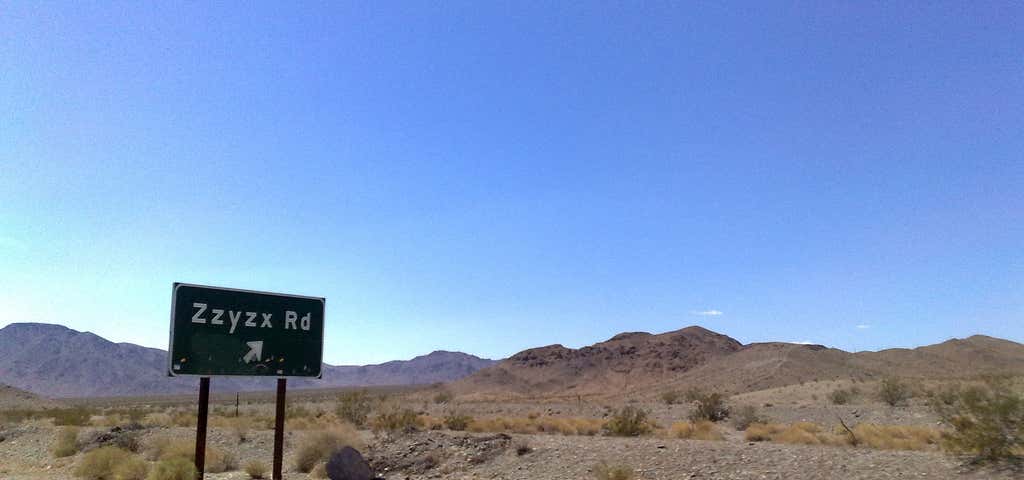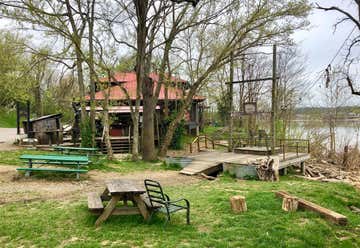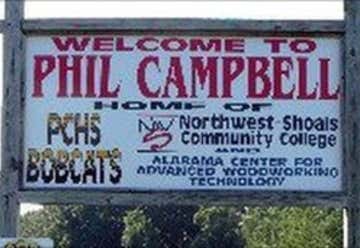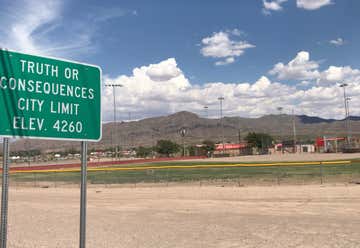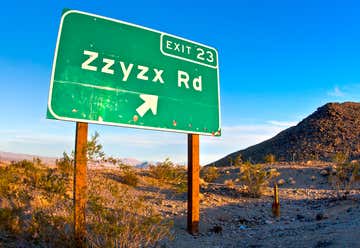What's in a name? A lot, actually. You can tell things about a town or place right off the bat, based on its name. For example, the town of "Nothing" is about what you'd expect, and the former settlement of "Zzyzx" is just as insane as its name suggests. Whether the name is meant to draw attention, or a place comes by the weirdness honestly, there's always a good story behind a place's name, and usually, they've got some personality to back it all up. Here are some of the stories behind America's weirdest-named spots.
We've all felt the pain of mispronouncing the name of a town in front of a local who just has to correct you, but when it comes to a lake in the town of Webster, Massachusetts, everyone is willing to give you a pass for butchering it. After all, there's 45 letters in the name.
Affectionately known as "Lake Webster" to locals who gave up on trying to pronounce the name a long time ago, Lake Chargoggagoggmanchauggagoggchaubunagungamaugg is considered to have the longest name in the United States, and one of the longest in the whole world. Originally the name was something a bit shorter, Chabanaguncamogue, which translates to "Fishing Place at the Boundary", but of course, white dudes came along and completely screwed everything up.
As white settlers began to reach the area, the native tribes began to refer to the lake by a new name, Chargoggaggoggmanchoggagogg, which means "Englishmen at Manchaug". After a bunch of confusion between different map makers, someone decided to just smash the two names together to form Chargoggagoggmanchauggagoggchaubunagungamaugg, or "Englishmen at Manchaug at the Fishing Place at the Boundary". Problem-solving at its finest.
Unfortunately, the name is now so hard to say that no one can seem to spell it correctly, including sign makers. Even today, numerous signs pointing to the lake contain spelling errors, but as you might imagine, no one really wastes any time trying to correct them when only the most anal of grammar nazis will notice. Lake Chargoggagoggmanchauggagoggchaubunagungamaugg is more than just a place to snag a hilarious town t-shirt. With excellent boating opportunities and clean waters to swim in, the lake offers tourists a great place for summer fun. The swamps around the lake also make for a wonderful place to experience some of Massachusettes's diverse nature, particularly along the Walkabout Trail.
Craving a small town, vintage atmosphere with a side of weirdness? Take a drive to Rabbit Hash, an unincorporated hamlet on the Ohio River in Kentucky, where tradition and hospitality run deep. It wasn't always called "Rabbit Hash" though; the town's first name was Carlton, but people started confusing Carlton with the nearby town of Carrollton, so it got renamed. As to why "Rabbit Hash", there are a few theories. One says that it came about when a Christmas flood in 1847 washed most of the town away, and a local, watching the rabbits flee inland from the water, joked that he was gonna be eating "rabbit hash" for Christmas dinner.
Another tale is about a local doctor who had a fondness for hunting rabbits. One day, a local swiped his bag of dead rabbits, and then invited the doctor over for dinner, serving him hash made from his own rabbits. The doctor became known as the "rabbit hash doctor" and the nickname stuck around.
Funnily enough, the town isn't even most known for its weird name; it became popular after a documentary about the mayoral race came out... it followed Goofy, a dog, and his successful campaign. That's right, they elected a dog as mayor. Ever since then, all of their mayors have been dogs. Lucy Lou, the second dog mayor, was wildly popular, and Brynn, a pitbull, is currently in office, and has taken on the tough task of helping the town rebuild the beloved Rabbit Hash General Store.
As they say in Rabbit Hash, “it’s such a nice day out there I wouldn’t hit a lick at a snake,” and such days are best enjoyed on the General Store's porch with cold bottle of sarsaparilla, soaking up the Mayberry-esque vibes.
It's that time of the year all year round in Santa Claus, Indiana! One story claims that the no-frills Germans who settled the town didn't bother giving it a name until neighbors began to call it "The Nameless Town", and when they finally met to come up with one, it was on Christmas Even. Another story is that the town reportedly applied for a post office in 1856 under the name "Santa Fe", but were told to pick something else. The town then submitted "Santaclaus" as their name, and the weird moniker went mostly unnoticed until a Postmaster in the 1920s started promoting the "Santa Claus" postmark. From then on, the town began to truly embrace the holiday theme, especially after "Santa Claus Land", which some consider to be the world's first theme park, opened in 1946 (today it's called "Holiday World"). Of course, visiting here in December is a special experience, but you can find touches of Christmas cheer around town all year.
Phil Campbell, Alabama is the only town in America to contain a first AND last name, and it was, in fact, named for a person. Phil was a British railroad work crew leader/engineer who had set up a work camp here in the 1880s. A prominent local businessman told Phil that if he would construct a railroad depot and connect it to the railroad going through the area, Allen would turn it into a town and name it after Phil. Phil built the depot and track, and the businessman kept his word. In the 90s, a Phil Campbell convention was held for Phil Campbells, and 22 men with that name showed up (a Phyllis Campbell was also in attendance as well). They haven't held a convention in awhile, but they do keep a record of Phil Campbells who make the pilgrimage to town!
Once called "Hot Springs, NM", Truth or Consequences renamed itself during a contest put on by the 1950s radio quiz show of the same name; the deal was that the first town to rename itself "Truth or Consequences" would have the show broadcast live from the town. The show's host, Ralph Edwards, actually continued to visit the town during its annual Fiesta, which still takes place during the first weekend in May. It's celebrated with dances, parades, the Hatch Chile Queen pageant, shows, and more.
There aren't a ton of surprises about the abandoned ghost town of Nothing, Arizona. It got its name in the exact same way you'd expect (a group of four "drunk" pals opened a gas station in the Arizona desert and called it "Nothing" just because), it's in the exact place you would expect (in the middle of nowhere), it was exactly as successful as you'd expect (not very) and there's pretty much nothing to see or do in Nothing. Not these days, at least. But honestly, if you expected anything from A Town Called Nothing, then you're about to be super disappointed.
Back when Nothing first opened in the late 1970's, the group of four friends ran a gas station and a little garage and sold souvenirs on the side. Despite their remote location, the gas station operated until 2005, when it was shut down and sold. The new owner took out the gas pumps and fenced it off, but put it up for sale again. The third owner planned to reopen Nothing with a restaurant, but not surprisingly, he had a hard time getting his plan to open an eatery in the middle of nowhere off the ground (although think of the potential! "So, what do you want for dinner?" "Nothing.", etc. etc.)
So now Nothing is back to being, well... nothing. There's still one abandoned building, all boarded up, but you can still see the signs declaring that you're in "NOTHING"... which are a great photo op, by the way.
And there's still a glimmer of hope for Nothing; at least, the Arizona Department of Transportation thinks so. Actually, you really have to appreciate their sense of humor. They installed a motorist callbox in Nothing and placed a little sign on it that pretty much sums everything beautiful and poetic about the town of Nothing. It reads: "Town of Nothing Arizona. Founded 1977. Elevation 3269ft. The staunch citizens of Nothing are full of Hope, Faith, and Believe in the work ethic. Thru-the-years-these dedicated people had faith in Nothing, hoped for Nothing, worked at Nothing, for Nothing."
Zzyzx (AKA Camp Soda and Soda Springs) is located at the end of Zzyzx Road, a 4.5-mile-long rural road off Interstate 15, in San Bernadino County, California. The unincorporated community is also located within Mojave National Preserve. In its former life, it was the Zzyzx Mineral Springs and Health Spa. What makes Zzyzx, California such a weird and wonderful place (other than the name) is that it was founded by a crackpot preacher who stuck his middle finger up at the government when he named the town with the last letters of the alphabet.
So, who the heck came up with that crazy name?!
Well, that's where things get a little weird. Curtis Howe Springer was one of those old-timey radio evangelists, way back in the day. However, he wasn't actually a minister of any kind. He was born in 1896 in Birmingham, Alabama, and spent much of his early life convincing people he was a doctor. He proclaimed himself to be the "last of the old-time medicine men", but the American Medical Association disagreed. They proclaimed him "King of the Quacks" in 1969.
Throughout his life Curtis also claimed to be a boxing teacher in the U.S. Army, the "Dean of Greer College" (a defunct/bankrupt school in Chicago), he was a rabble-rouser during Prohibition (he was in favor of it, and railed against "Demon Rum"). He also loved making up universities. Like the "National Academy, The Springer School of Humanism, the American College of Doctors and Surgeons, the Westlake West Virginia College, and two non-existent osteopathy schools in Meyersdale, Pennsylvania and New Jersey." He sounds like a real catch. The best thing, though, is how he'd write his name on pamphlets for speaking engagements: Curtis Howe Springer, M.D., N.D., D.O., Ph.D.
In 1934, he began his career in radio broadcasting, which included selling his "medicines". His Antediluvian Tea was basically a laxative dressed up in a teabag. The Journal of the American Medical Association published a lengthy article titled "Curtis Howe Springer: A Quack and His Nostrums" in 1936, which details all of Springer's get-rich-quick schemes.
Curtis founded several health spas during the 1930s and 1940s, including the Haven of Rest in Fort Hill, PA, and one in Wilkes-Barre, another in Cumberland, MD, and one in Davenport, IA. However, Curtis really hated paying taxes, so most of his "spas" were seized by the Feds. Then in 1944, Curtis hooked up with a new lady and she filed a claim to 12,800 acres of Mojave Desert in California. Springer named the land Zzyzx Mineral Springs resort. The name's purpose was so that it would be known as "the last word in health", and to build his resort he hired a bunch of homeless men from L.A.'s infamous Skid Row.
Springer even faked the hot spring! Seriously! He used a boiler to heat pools around the resort, which ultimately included a 60-room hotel, spa, mineral baths, a radio studio, and a church, (of course). So, even though he wasn't a minister or a doctor, over 200 radio stations carried his program. Listeners would send in donations for his "cures", which he claimed could relieve constipation, hemorrhoids, hair loss and, oh yeah... cancer. However, what people were getting was actually a bit better than snake oil. It was mostly celery, carrot and parsley juices.
Unfortunately, this empire of carrot juice and laxatives all came crumbling down in the late 1960s when the Feds started noticing that Springer was making loads of dough off "donations" for his "cures" and Uncle Sam came a-knockin'. The Feds also accused Springer of squatting and invalidated his claim to the settlement of Zzyzx (which he based on an 1872 Mining Law). Springer and his "followers" were evicted and Springer himself was convicted for selling junk "cures". He served only 49 days in jail for milking money out of sick people for decades.
Zzyzx and Soda Springs are both open to the public and offer a variety of outdoor activities, such as hiking trails, roadside attractions, toilets (always a plus!), and a scenic picnic area. The actual history of the area goes back all the way to prehistoric times when nomadic tribes would gravitate to the natural spring, and use the site as a quarry to create arrowheads. When you visit, keep a keen eye out for rock art.
Since 1976, California State University has managed the land and have built a great Desert Studies Center on site.
The origin of Idiotville, Oregon is actually pretty dark. Between 1933 and 1950, four huge fires ravaged the Tillamook State Forest. They were started by sparking steel cables, a discarded cigarette, and possibly even a Japanese bomb during WWII, and collectively they were known as the Tillamook Burn. Two camps were set up deep in the forest to salvage what timber remained and clean up a bit after the Burn, Ryan's Camp and Idiotville. "Idiotville" started off as a joke (because only an idiot would travel days to reach a camp where they would be put to work doing such a meaningless job) but it kinda stuck. Even though the camp dried up once the work was done, it kept popping up on maps; so much so that a nearby creek was named "Idiot Creek". There aren't any buildings left, but there is a sign for Idiot Creek that makes for a great photo op, and it's always fun to suggest to friends that you all take a hike out to Idiotville.
